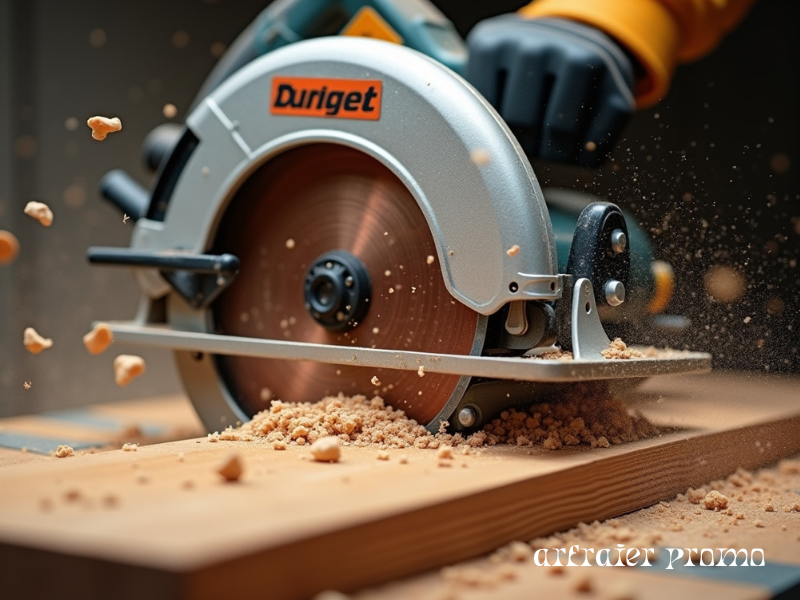Whether you’re a professional carpenter, a passionate DIYer, or just someone who enjoys creating small wooden crafts at home, the right wood cutting tools can make all the difference. They determine how clean your cuts are, how safe your work environment feels, and how enjoyable your woodworking experience becomes.
In this complete guide, we’ll explore every major type of wood cutting tool — from hand tools to power tools, electric models, and even crafting tools. You’ll also learn their specific uses, benefits, and how to choose the right one for your projects.
Why Wood Cutting Tools Matter
Wood is one of the most versatile materials used for furniture, decoration, construction, and art. But without the right tools, cutting it cleanly and safely becomes a challenge. The right cutting tool helps you:
-
Save time and effort while working.
-
Achieve cleaner, more accurate cuts.
-
Improve safety by reducing slips or rough handling.
-
Work on diverse projects — from home repairs to creative crafts.
Let’s break down the different types of wood cutting tools available and how they can help you.
1. Hand Wood Cutting Tools
Hand tools are the oldest and simplest type of wood cutting tools. They don’t need electricity and are great for beginners or those who prefer manual precision. While they require physical effort, they allow full control and are often more affordable.
Hand Saw
A hand saw is the most traditional wood cutting tool. It’s perfect for cutting wooden planks, small boards, or trimming furniture parts.
How it works: You move the blade back and forth manually to cut through the wood fibers.
Best for: DIY home repairs, furniture trimming, and small-scale projects.
Tip: Keep the blade sharp and clean to avoid rough edges.

Coping Saw
The coping saw is a small, lightweight tool with a thin blade stretched between a U-shaped frame.
Use: It’s ideal for cutting curves, corners, and decorative shapes in wood — such as in carpentry joints or craft projects.
Example: Perfect for cutting letters, patterns, or artistic designs into thin wood sheets.
Back Saw (Tenon Saw)
A back saw has a stiff spine that keeps its blade straight, ensuring accurate cuts.
Use: It’s used for fine, straight, and detailed cuts — commonly in joinery or when making frames and cabinets.
Pro tip: Pair it with a miter box to achieve perfectly angled cuts.
Bow Saw
The bow saw features a long, toothed blade held in tension by a metal or wooden frame shaped like a bow.
Use: Excellent for rough cuts, pruning, or cutting logs outdoors.
Why it’s great: It removes wood quickly, making it ideal for outdoor or heavy cutting tasks.
Wood Chisels
Wood chisels are flat-bladed tools used for shaping, carving, or trimming wood surfaces.
Use: They help remove small pieces of wood, clean up joints, or add details to carvings.
Safety tip: Always strike chisels with a wooden or rubber mallet to maintain control.
2. Power Wood Cutting Tools
Power tools make woodworking faster, easier, and more precise. They are powered by electricity or batteries and are suitable for medium to large-scale projects.
Circular Saw
A circular saw has a round, rotating blade that can cut through wood, metal, or plastic depending on the blade type.
Use: It’s ideal for straight, long cuts in large wood sheets like plywood or MDF boards.
Benefits: Fast, accurate, and powerful — a must-have for any serious woodworker.
Safety tip: Always secure the wood with clamps before cutting.
Jigsaw
The jigsaw uses a small, narrow blade that moves up and down to cut through wood.
Use: Excellent for curved or irregular shapes, making it perfect for artistic or custom woodwork.
Example: Cutting a circular tabletop or custom window shape.
Bonus: Many jigsaws come with variable speed controls for better precision.

Table Saw
The table saw is a stationary power tool with a circular blade that rises through a slot in the table surface.
Use: Best for straight, long, and repetitive cuts.
Ideal for: Furniture making, cabinet work, and flooring projects.
Pro tip: Use a guide fence to ensure perfectly straight cuts every time.
Miter Saw
A miter saw (or chop saw) features a circular blade mounted on a swing arm that pivots to make angled cuts.
Use: Perfect for crosscuts and miter joints — common in framing, molding, and trimming work.
Why it’s useful: Provides clean, accurate cuts at various angles without manual measuring.
Band Saw
A band saw has a long, continuous blade that moves around two wheels.
Use: It cuts curves, circles, and thick wood easily. It’s also great for resawing — slicing thick wood into thinner pieces.
Example: Perfect for making wooden bowls or curved furniture legs.
3. Electric Wood Cutting Tools
Electric wood cutting tools take power tools one step further — they’re designed for heavy-duty performance, efficiency, and professional use. They can handle thick wood, large projects, and continuous work with ease.
Electric Chainsaw
The electric chainsaw is powerful and ideal for cutting logs, branches, or heavy wood pieces.
Use: Commonly used in outdoor woodworking, tree cutting, and large-scale carpentry.
Benefits: Requires less effort, delivers fast results, and doesn’t produce fumes like gas chainsaws.
Tip: Always wear safety gloves and keep both hands on the handle.

Reciprocating Saw
A reciprocating saw (or “sawzall”) uses a straight blade that moves back and forth rapidly.
Use: Perfect for demolition work or cutting wood in tight spaces.
Example: Cutting through wooden beams or removing old furniture parts.
Why it’s efficient: It can cut through wood with nails, pipes, and even drywall.
Electric Scroll Saw
An electric scroll saw is similar to a jigsaw but fixed on a table.
Use: Designed for fine, detailed, and decorative cuts. Excellent for craft projects, artistic designs, and model building.
Example: Cutting out letters, ornaments, or small artistic shapes.
Electric Planer
The electric planer is used to smooth, flatten, or trim wood surfaces.
Use: Ideal for leveling uneven surfaces or resizing wooden boards.
Benefit: Gives wood a professional, smooth finish without heavy sanding.
Cordless Circular Saw
Cordless circular saws offer the same power as regular circular saws but with battery convenience.
Use: Great for working outdoors or in locations without power outlets.
Advantage: Lightweight, portable, and time-saving.
Electric wood cutting tools make work faster and more accurate, especially for large or repeated cuts.
According to Ronix Tools’ woodworking experts, choosing the right motor power and blade type can drastically improve precision and reduce wear on materials.
4. Wood Cutting Tools for Crafts
Crafting tools focus on precision and control rather than power. They’re smaller, lighter, and ideal for handmade wooden art, DIY décor, and hobby projects.
Mini Hand Saw
A compact version of the traditional saw, designed for cutting thin wood sheets or small pieces.
Use: Ideal for cutting balsa wood or creating mini furniture for models.
Scroll Saw
The scroll saw is the ultimate craft tool for detailed and intricate wood designs.
Use: Makes tight turns and delicate cuts easily.
Example: Creating ornaments, wooden jewelry, or name signs.
Bonus: It leaves smooth edges, reducing sanding time.
Craft Knife or Hobby Knife
A craft knife (like an X-Acto knife) is a precision tool with replaceable blades.
Use: Ideal for engraving, trimming, or shaping thin wood sheets and veneer.
Caution: Use with a cutting mat for control and safety.
Rotary Tool (Dremel)
A Dremel or rotary tool is a small electric device with multiple attachments for carving, sanding, and engraving.
Use: Great for engraving wood art, making miniature details, or polishing small pieces.
Example: Perfect for wood carving artists or model makers.
Small Coping Saw
A smaller version of the coping saw works well for hobby projects.
Use: Helps make delicate curves and small interior cuts for decorations.
Uses of Wood Cutting Tools
Wood cutting tools serve many purposes, from large-scale building to creative hobbies. Here’s a breakdown of where each category fits best:
-
Furniture Making: Circular saw, table saw, miter saw.
-
Home Repairs: Hand saw, jigsaw, cordless tools.
-
Outdoor Work: Chainsaw, bow saw, reciprocating saw.
-
Crafting & Art: Scroll saw, rotary tool, mini saw.
-
Joinery Work: Back saw, chisels, planer.
Safety Tips for Wood Cutting
Stay safe while working with any wood cutting tool by following these quick tips:
-
Always wear safety goggles, gloves, and a dust mask.
-
Inspect tools and blades before use for any damage.
-
Secure wood pieces with clamps before cutting.
-
Keep hands away from blades and never rush a cut.
-
Maintain a clean, stable workspace to prevent slips.
For complete safety rules, check OSHA’s woodworking guidelines.
Following these steps ensures accuracy, efficiency, and safety in every woodcutting project.
Hand vs Power vs Electric Tools
Feature |
Hand Tools |
Power Tools |
Electric Tools |
|---|---|---|---|
| Best For | Precision & control | Medium projects | Heavy-duty or professional work |
| Speed | Slow | Fast | Very fast |
| Ease of Use | Beginner-friendly | Moderate | Requires experience |
| Power Source | Manual | Battery or corded | Electric outlet |
| Maintenance | Low | Medium | Medium to high |
| Cost Range | Affordable | Moderate | Expensive but efficient |
How to Choose the Right Wood Cutting Tool
When choosing the perfect tool, consider the following:
-
Project Type:
-
Furniture & construction → Power or electric tools.
-
DIY or small projects → Hand tools.
-
Crafts → Precision tools like scroll saws or rotary tools.
-
-
Material Thickness:
-
Thick wood = Circular saw, chainsaw, or band saw.
-
Thin sheets = Hand saw or scroll saw.
-
-
Skill Level:
-
Beginners should start with hand tools.
-
Experienced users can upgrade to electric saws for efficiency.
-
-
Budget:
-
Invest in versatile tools like a circular saw or jigsaw first.
-
Expand your toolkit as you grow more confident.
-
-
Safety Features:
-
Look for blade guards, ergonomic handles, and anti-kickback designs.
-
Recommended Tools
-
Best Hand Tool: Stanley Hand Saw – great for everyday use.
-
Best Power Tool: DeWalt Circular Saw – perfect for large wood sheets.
-
Best Electric Tool: Bosch Electric Chainsaw – durable for outdoor cutting.
-
Best Craft Tool: Dremel Rotary Kit – ideal for fine detailing and engraving.
Conclusion
Wood cutting is an art that combines skill, precision, and the right tools. Whether you’re shaping a piece of furniture, building a deck, or crafting handmade décor, the right wood cutting tool can transform your work from rough to remarkable.
Start simple — learn how each tool behaves, maintain it properly, and prioritize safety. Over time, you’ll know exactly when to reach for a hand saw for detail or an electric chainsaw for power.
In the world of woodworking, your creativity is unlimited — and with the right tools, your possibilities are too.
Frequently Asked Questions (FAQs)
1. What is the best tool for cutting thick wood?
A circular saw or chainsaw works best for cutting thick wood, depending on the size and precision required.
2. Which wood cutting tool is best for crafts?
A scroll saw or rotary tool (Dremel) is ideal for small, detailed craft projects.
3. Are electric wood cutting tools better than manual ones?
Electric tools are faster and more efficient, while manual tools provide more control and are better for beginners.
4. How can I maintain my wood cutting tools?
Keep blades sharp, clean after each use, oil metal parts, and store tools in a dry place.
5. What’s the safest saw for beginners?
A hand saw or jigsaw is generally safest for those just starting woodworking.





